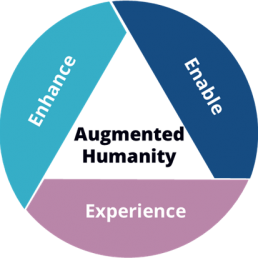Imagine sitting in a café in Tokyo, with your friends, and being served coffee by a robotic avatar remotely controlled by a lady affected by amyotrophic lateral sclerosis. You chat with her and even take pictures with her avatar. You connect to a person who is physically impaired and would not otherwise be able to work and “be” there with you.
This is not sci-fi. OriHime-D robots, developed by the Japanese start-up OryLab, are enabling 10 people with disabilities to work as waiters and waitresses in the Dawn Ver Beta Café.
Why Is it Relevant?
According to the European Disability Forum, at EU level, only half of people with disabilities are employed, compared with 75% of those without disabilities. Moreover, women with disabilities, young disabled people and people in need of high-level support are even more likely to be discriminated against and excluded from the labour market. Unemployment and financial problems can lead to poverty and social exclusion, and the socioeconomic impacts of these figures are alarming — highlighting how companies and society at large are missing an opportunity due to a lack of preparedness and resources.
The Convergence of Technology and Humanity
Technology and society are at a crossroads, where accessibility and inclusion are key dimensions across all domains of living, from mobility, to work, to leisure. Digital solutions are rapidly evolving, and are pushing human boundaries — enabling experiences, connections and perceptions that were difficult to imagine even just a few years ago.
At IDC, we’ve been discussing how technology and humanity are exponentially converging, giving rise to the concept of augmented humanity, and looking at the impact that emerging technologies such as AR/VR, wearables and brain-computer interfaces (BCIs) can have on human senses, capabilities, perceptions and insights.
The augmented-humanity concept can be split into the “3Es” — enable, enhance and experience — with this post, as part of a series of deep-dives, focusing on the “enable” pillar.

Enable: The Untapped Potential of Accessibility and Inclusion
The “enable” dimension focuses on the role of technology in enabling humans to achieve an output they wouldn’t otherwise be able to achieve — the “what” humans can do and perceive. “Enable” relates to the broader accessibility concept and how technology can help to foster inclusion and unlock human cognitive and physical activities that would otherwise be denied, from overcoming natural restrictions to enabling empathy, to providing unprecedented resources and insights to working professionals. There are a number of use cases here that relate to the concept of accessibility and open it up to include a wider range of activities. These include:
- Technology enabling people with physical and cognitive disabilities. For example, as shown in research by BrainGate, BCIs can enable people with paralysis to operate mobile devices such as tablets just with their thoughts. In the study, neuro signals captured by an aspirin-sized implant were connected to a Bluetooth interface configured as a virtual mouse and paired to a tablet. The participants, affected by spinal cord injuries, were able to make up to 22 point click selections and type 30 characters a minute. On the physical impairments and disabilities side, Open Bionics has developed bionic limbs with a mission to make them more accessible and “desirable.” It started by introducing the Hero Arm, a stylish bionic hand aimed at turning children with limb disabilities into “bionic heroes” — and, in doing so, making science fiction a reality.
- Smart homes to make the vulnerable and the less digital savvy feel safe and independent. Smart homes are a new way to provide value-based care and tackle the challenges of an ageing population, especially during the COVID-19 pandemic when the more vulnerable members of society, such as chronically ill patients and the elderly, need all the help they can get. Sensors that monitor temperature and humidity, or detect falls, as well as facial recognition systems for home entry, are just some of the solutions being rolled out to support the elderly and people with dementia living on their own. In Scotland, for example, a partnership between NHS Highland and the Albyn Housing Society has developed a new housing concept that will include ambient, physiological and building sensors to collect data on things such as dehydration, diet, the use of prescribed medications, and levels of activity and social interaction.
- Technology enabling a new level of empathy. Augmented reality (AR) and virtual reality (VR) technology can support social compassion and empathy toward those most likely to experience discrimination and social isolation, such as the homeless and immigrants. New research from Stanford University found that a VR experience increased participants’ awareness of and compassion and advocacy toward the homeless — more so than with more traditional types of “perspective taking” such as reading about or trying to imagine the experience of being homeless.
- Smart diagnostics and treatment for deeper insights. With advancements in smart diagnostics and analytics tools, healthcare teams and patients can potentially access a new level of data granularity and insight. Small, pill-shaped, water-proof ingestible devices, for example, can work with Bluetooth technology and connect to wireless devices equipped with apps to measure PH, temperature, and pressure readings, detect gut bleeding and analyse gut gas to provide new insights on gut health and markers for gastroenteric tract disorders.
Conclusions
At a time when technology and humanity are exponentially converging and societies are rethinking the ways they look at accessibility and inclusion, staying competitive requires companies to align new technologies with new value propositions — and put the human factor at the center of their strategies. Organisations will need to leverage human-machine interactions that broaden the spectrum of human cognitive and physical capabilities, challenging accessibility boundaries and developing solutions that align to the needs of individuals and societies at large.
If you want to learn more about Augmented Humanity or have any questions, please head over to https://www.idc.com/eu and drop your details in the form on the top right.
